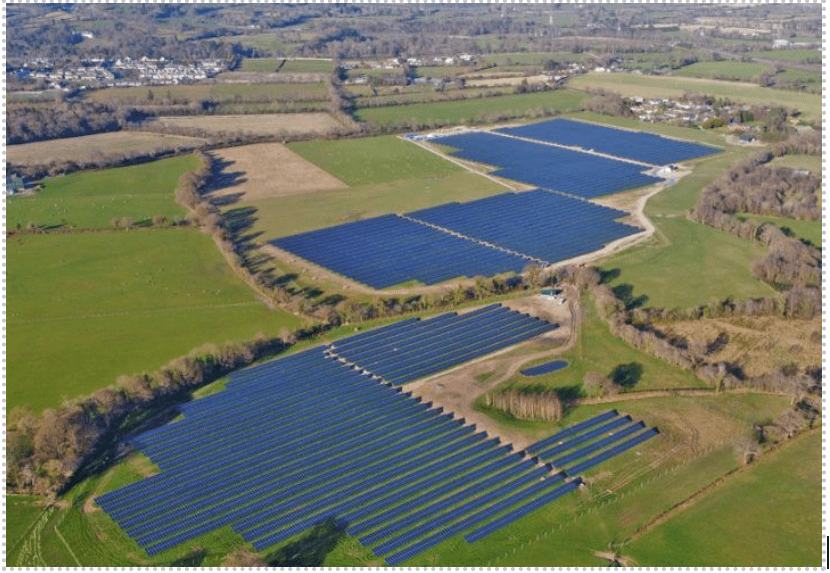Overcoming Challenges for Connecting Solar Farms to the Irish Grid

As Ireland moves towards its net zero carbon targets, as set out in the government’s Climate Action Plan 2023, the role of renewable energy generators such as solar farms are of growing importance. However, the process of bringing new solar farms to completion and connecting them to the national grid presents a significant challenge.
Over the last decade, there has been an upsurge in grid connection applications for commercial solar farms. More than 200 valid applications have been submitted for commercial-scale solar farms between 2020 and 2022 alone. One hundred twenty-nine of these applications were granted, with a total generation capacity of 2.3 GW1.
Despite the large number of applications, few commercial-scale projects have been developed as of yet. In a statement to the Joint Committee on Climate Change in December 2019, ISEA noted that “more than 500 MWs of solar projects across Ireland have been ready to build since 2017”.
A detailed feasibility study and risk appraisal carried out by experienced consultants at an early stage of a project can help avoid many of the reasons these projects have failed to be delivered. Below are some of the hurdles prospective solar farms face and the solutions offered by our multidisciplinary team to overcome them.

Figure 1: Millvale solar farm in Co. Wicklow
1. Grid Connection Assessment:
A critical factor governing the viability of a solar farm is its proximity to the nearest grid node and the available capacity at that node to accept the generation. Ireland’s transmission and distribution networks were primarily designed for fossil-fuel-powered generation, so upgrades to accommodate a solar farm’s additional capacity and intermittent nature can be costly.
The feasibility studies carried out by the ORS Energy Management team assess the proximity and capacity of all layers of existing grid infrastructure, identifying any necessary upgrades or modifications required for integration. Understanding the grid connection process and associated costs ensures the project’s technical and economic feasibility and facilitates a smooth solar farm connection.
2. Assessment of Available Solar Resources:
Detailed data on solar irradiation patterns specific to the site can be analysed through a feasibility study. In addition, the size of the system, the number of modules and the number of inverters can be estimated and optimised against available land and available capacity at local substations. This enables an estimation of the expected energy yield from the solar farm, which is crucial for financial modelling.
3. Financial Modelling:
A feasibility study should provide a comprehensive financial assessment. Cost elements that form the basis of a Solar Farm financial model should include Capital Expenditure (CAPEX) items such as panel procurement, grid connection and site preparation, as well as Operational Expenditure (OPEX) items such as panel maintenance, insurance and rates payable to the council.
The financial model evaluates revenue through a fee paid for the electricity produced, considering government support schemes such as RESS, which gives a guaranteed price for the electricity generated.
The results of the financial assessment carried out by the ORS Energy Management team provide stakeholders with key metrics to assess the payback period, rate of return, profitability and carbon emission savings provided by the solar farm. This information is crucial for securing financing and making informed decisions about the project’s economic viability.
4. Assessment of Site Suitability:
An engineering assessment of the site helps determine the suitability of a location and identifies constraints and items that require further investigation. Assessments made in the feasibility study include:
- Ground conditions overview and foundation considerations
- Site topography
- Site drainage requirements
- Site access requirements for construction and maintenance
- Overview of existing services in the area, such as water supply.
This information is crucial to identify any constraints or obstacles that might be encountered at the planning application stage. It also helps to optimise the solar yield of the site. The Civil & Structural, and Infrastructure teams at ORS use their expertise in this area to provide a comprehensive engineering assessment of the site.
5. Environmental Assessment:
The environmental impact of the solar farm should be evaluated early in the project’s life to identify any potential issues that might be encountered with the planning application. The ORS Environmental Team has vast experience in carrying out Environmental Impact Assessment (EIA) screening, Natura Impact Statements (NIS) and flood risk assessments, as well as identifying ecological or geological receptors, which may require further assessment in support of any application for planning permission.
Addressing these aspects promotes the sustainable development of the solar farm and ensures compliance with environmental regulations. When identified at the feasibility stage, mitigation measures can be recommended to avoid adverse environmental impacts and assist with planning applications.
In summary, a detailed feasibility study for a solar farm in Ireland provides critical insights into site suitability, energy yield estimation, financial viability, grid integration, environmental impact, and stakeholder engagement. These benefits enable informed decision-making, enhance project success, and contribute to the sustainable development of domestic renewable energy generators. Contact our Energy Management team today to begin your next project.
